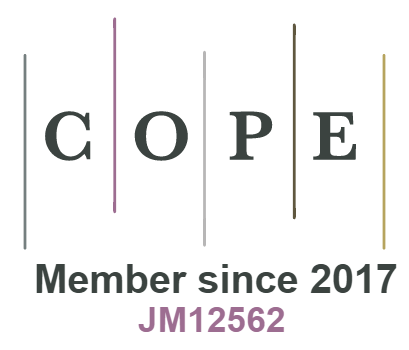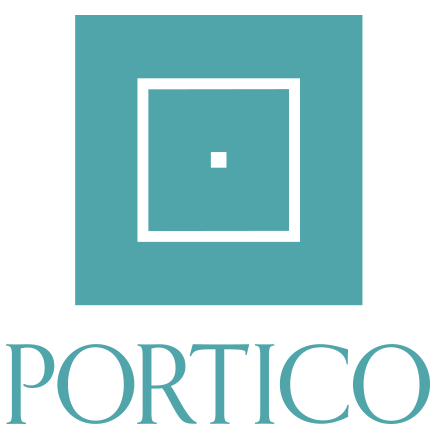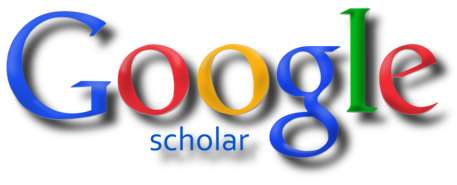Information For Authors
General Information
Editorial Objectives
Engineering International is the multi-disciplinary, international, blind peer-reviewed, Within this broad framework, the journal seeks to provide a forum for experts. Engineering International provides immediate open access to its content on the principle that making research freely available to the public supports a greater global exchange of knowledge.
Engineering International registered in the ISSN Register (the world catalog of serials and continuing resources, taken from the ISO standard 3297 which defines the ISSN and its uses). Articles in this journal have undergone a rigorous blind peer review system, based on initial editor screening and involving in-country and international refereeing, ensures that articles meet the highest standards of quality.
Submissions
Prospective authors should ensure their papers meet the journal's scope and must adhere to the author's guidelines. Every submission must spell out the implications of findings in the paper (these should be mentioned in the introduction, objectives, research methodology, discussion, and conclusion sections of your paper.) Papers that focus on findings for specific sectors without adequate attention to the objectives of the study will not be accepted.
In general, only research-based (may be any type of research, including technical or conceptual) submissions will be considered.
Review process
Each paper is reviewed by the editor and, if it is judged suitable for this publication, it is then sent to at least one independent referee for blind peer review. Based on the reviewer's recommendations, as well as consultation between relevant section editors the Editor-in-chief / Managing Editor then decides whether the paper should be accepted as is, revised, or rejected. The editor will use the Grammarly and Turnitin software for checking the originality of submissions received.
Copyright
Publishing a paper with this journal means that the author or authors retain the copyright in the paper. This journal is granted an exclusive non-commercial reuse license by the author(s), but the author(s) are able to put the paper onto a website, distribute it to colleagues, give it to students, use it in your thesis, etc, so long as the use is not directed at a commercial advantage or toward private monetary gain. Copyright details.
License
Engineering International provides immediate open access to its content on the principle that making research freely available to the public supports a greater global exchange of knowledge. This Journal is licensed under a Creative Commons Attribution-NonCommercial 4.0 International License. This license lets others remix, tweak, and build upon your work non-commercially, and although their new works must also acknowledge & be non-commercial, they don’t have to license their derivative works on the same terms. || View License Deed || View Legal Code ||
Published Open Access articles are distributed under this Creative Commons Attribution-Noncommercial 4.0 International License (CC BY-NC). Articles can be read and shared for noncommercial purposes under the following conditions:
- BY: Attribution must be given to the original source (Attribution)
- NC: Works may not be used for commercial purposes (Noncommercial)
Engineering International uses the CC BY-NC to protect the author's work from misuse.
Archiving
Engineering International utilizes the PORTICO system to create a distributed archiving system among participating libraries and permits those libraries to create permanent archives of the journal for purposes of preservation and restoration.
Permissions
Prior to article submission, authors should clear permission to use any content that has not been created by them. Failure to do so may lead to lengthy delays in publication. Engineering International is unable to publish any article which has permissions pending.
Informed Consent Statement
For all research involving human subjects, informed consent to participate in the study should be obtained from participants (or their parent or guardian in the case of children under 16) and a statement to this effect should appear in the manuscript. For all manuscripts that include details, images, or videos relating to individual participants, written informed consent for the publication of these must be obtained from the participants (or their parent or legal guardian in the case of children under 16) and a statement to this effect should appear in the manuscript.
When reporting experiments on human subjects, authors should indicate whether the procedures followed were in accordance with the ethical standards of the responsible committee on human experimentation (institutional and national) and with the Helsinki Declaration of 1975, as revised in 2000 (5).
Experimental research on vertebrates or any regulated invertebrates must comply with institutional, national, or international guidelines, and where available should have been approved by an appropriate ethics committee. A statement detailing compliance with guidelines and/or ethical approval must be included in the manuscript. Field studies should be conducted in accordance with local legislation, and the manuscript should include a statement specifying the appropriate permissions and/or licenses.
COPE (Committee on Publication Ethics)
Engineering International adheres to high ethical standards in publishing. COPE provides advice to editors and publishers on all aspects of publication ethics and, in particular, how to handle cases of research and publication misconduct.
Final Revised Submission
The author must ensure that the manuscript is complete, grammatically correct, and without spelling or typographical errors. Before submitting, authors should check their submission completeness using the available Author Guidelines and Submission System. Galley Proofs will be emailed prior to publication.
Manuscript Requirements
Please prepare your manuscript before submission, using the following guidelines:
Format
All files should be submitted as a Word document (docx.).
Article Length
Articles should be between 2500 and 5000 words in length. This includes all text including references and appendices. Please allow 280 words for each figure or table.
Article Title
A title of not more than twelve (12) words should be provided.
Article Title Page
An Article Title Page should be submitted alongside each individual article using the followings:
- Article Title
- Author Details (see below)
- Acknowledgments
- Author Biographies
- Abstract (see below)
- Keywords (see below)
- Article Classification (see below)
Author Details
Details should be supplied on the Article Title Page including:
- Full name of each author
- Affiliation of each author, at the time research, was completed
- Where more than one author has contributed to the article, details of who should be contacted for correspondence
- E-mail address of all contributor authors
- Brief professional biography of each author.
Abstract
Authors must supply an abstract on the Article Title Page. On the Article Title Page, set out including:
- Purpose (mandatory)
- Design/methodology/approach (mandatory)
- Findings (mandatory)
- Research limitations/implications (if applicable)
- Practical implications (if applicable)
- Social implications (if applicable)
- Originality/value (mandatory)
Maximum is 300 words in total (including keywords and article classification, see below).
Keywords
Please provide up to 7 keywords on the Article Title Page, which encapsulate the principal topics of the paper.
Whilst we will endeavor to use submitted keywords in the published version, all keywords are subject to approval by Engineering International's in-house editorial team and may be replaced by a matching term to ensure consistency.
Article Classification
Categorize your paper on the Article Title Page, under one of these classifications:
- Research paper
- Technical notes
- Conceptual paper
- Case study
- Literature review
- Working paper
Headings
Headings must be concise, with a clear indication of the distinction between the hierarchy of headings. The preferred format is for first-level headings to be presented in bold format and subsequent sub-headings to be presented in medium italics.
Research Funding
Authors must declare all sources of external research funding in their article and a statement to this effect should appear in the Acknowledgements section. Authors should describe the role of the funder or financial sponsor in the entire research process, from study design to submission.
Figures
All Figures (charts, diagrams, line drawings, web pages/screenshots, and photographic images) should be submitted in electronic form.
All Figures should be of high quality, legible, and numbered consecutively with Arabic numerals. Graphics may be supplied in color to facilitate their appearance on the online database.
- Figures created in MS Word, MS PowerPoint, MS Excel, Illustrator should be supplied in their native formats. Electronic figures created in other applications should be copied from the origination software and pasted into a blank MS Word document or saved and imported into an MS Word document or alternatively create a .pdf file from the origination software.
- Figures which cannot be supplied in as the above are acceptable in the standard image formats which are: .pdf. If you are unable to supply graphics in this format then please ensure they are .tif, .jpeg, or .bmp at a resolution of at least 300dpi and at least 10cm wide.
- To prepare web pages/screenshots simultaneously press the "Alt" and "Print screen" keys on the keyboard, open a blank Microsoft Word document and simultaneously press "Ctrl" and "V" to paste the image. (Capture all the contents/windows on the computer screen to paste into MS Word, by simultaneously pressing "Ctrl" and "Print screen".)
- Photographic images should be submitted electronically and of high quality. They should be saved as .tif or .jpeg files at a resolution of at least 300dpi and at least 10cm wide. Digital camera settings should be set at the highest resolution/quality possible.
Tables
Tables should be typed and included in the main body of the article (not in a separate file).
References
References to other publications should be in Harvard style and carefully checked for completeness, accuracy, and consistency. This is very important in an electronic environment because it enables your readers to exploit the Reference Linking facility on the database and link back to the works you have cited through CrossRef.
You should cite publications in the text: (Adams, 2006) using the first named author's name or (Adams and Brown, 2006) citing both names of two, or (Adams et al., 2006), when there are three or more authors. At the end of the paper, a reference list in alphabetical order should be supplied, numeric referencing list {example [1], [2] } should not be submitted for evaluation:
For books
Surname, Initials (year), Title of Book, Publisher, Place of publication.
e.g. Harrow, R. (2005), No Place to Hide, Simon & Schuster, New York, NY.
For book chapters
Surname, Initials (year), "Chapter title", Editor's Surname, Initials, Title of Book, Publisher, Place of publication, pages.
e.g. Calabrese, F.A. (2005), "The early pathways: theory to practice – a continuum", in Stankosky, M. (Ed.), Creating the Discipline of Knowledge Management, Elsevier, New York, NY, pp. 15-20.
For journals
Surname, Initials (year), "Title of article", Journal Name, volume, number, pages.
e.g. Capizzi, M.T. and Ferguson, R. (2005), "Loyalty trends for the twenty-first century", Journal of Consumer Marketing, Vol. 22 No. 2, pp. 72-80.
For published conference proceedings
Surname, Initials (year of publication), "Title of paper", in Surname, Initials (Ed.), Title of published proceeding which may include place and date(s) held, Publisher, Place of publication, Page numbers.
e.g. Jakkilinki, R., Georgievski, M. and Sharda, N. (2007), "Connecting destinations with an ontology-based e-tourism planner", in Information and communication technologies in tourism 2007 proceedings of the international conference in Ljubljana, Slovenia, 2007, Springer-Verlag, Vienna, pp. 12-32.
For unpublished conference proceedings
Surname, Initials (year), "Title of paper", paper presented at Name of Conference, date of conference, place of conference, available at URL if freely available on the internet (accessed date).
e.g. Aumueller, D. (2005), "Semantic authoring and retrieval within a wiki", paper presented at the European Semantic Web Conference (ESWC), 29 May-1 June, Heraklion, Crete, available at http://dbs.uni-leipzig.de/file/aumueller05wiksar.pdf (accessed 20 February 2007).
For working papers
Surname, Initials (year), "Title of article", working paper [number if available], Institution or organization, Place of organization, date.
e.g. Moizer, P. (2003), "How published academic research can inform policy decisions: the case of mandatory rotation of audit appointments", working paper, Leeds University Business School, University of Leeds, Leeds, 28 March.
For encyclopedia entries (with no author or editor)
Title of Encyclopedia (year) "Title of entry", volume, edition, Title of Encyclopedia, Publisher, Place of publication, pages.
e.g. Encyclopaedia Britannica (1926) "Psychology of culture contact", Vol. 1, 13th ed., Encyclopaedia Britannica, London and New York, NY, pp. 765-71.
(For authored entries please refer to book chapter guidelines above)
For newspaper articles (authored)
Surname, Initials (year), "Article title", Newspaper, date, pages.
e.g. Smith, A. (2008), "Money for old rope", Daily News, 21 January, pp. 1, 3-4.
For newspaper articles (non-authored)
Newspaper (year), "Article title", date, pages.
e.g. Daily News (2008), "Small change", 2 February, p. 7.
For electronic sources
If available online, the full URL should be supplied at the end of the reference, as well as a date that the resource was accessed.
e.g. Castle, B. (2005), "Introduction to web services for remote portlets", available at http://www-128.ibm.com/developerworks/library/ws-wsrp/ (accessed 12 November 2007).
Standalone URLs, i.e. without an author or date, should be included either within parentheses within the main text, or preferably set as a note (roman numeral within square brackets within text followed by the full URL address at the end of the paper).




